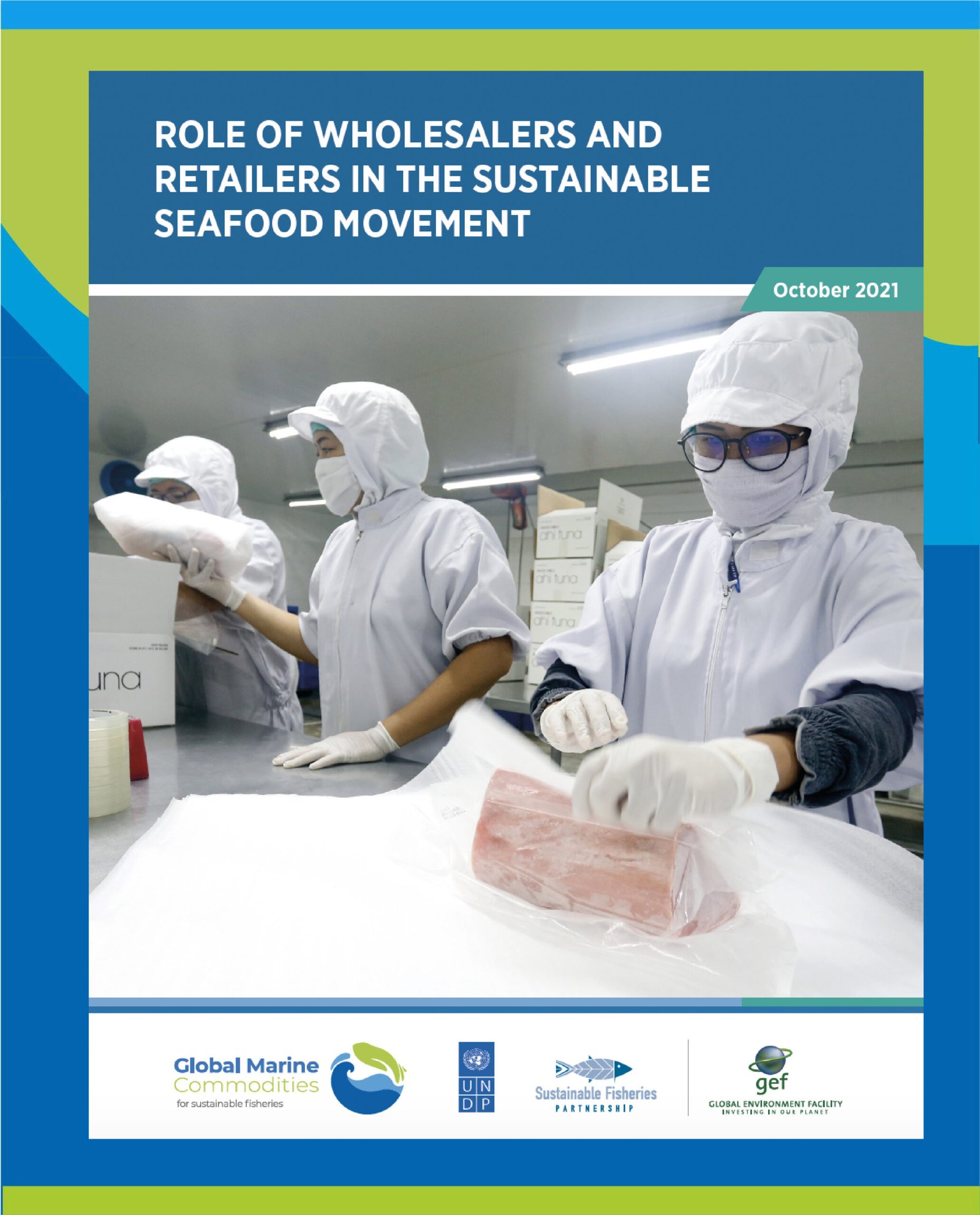Updates to the FIP Evaluation Tool: A standardized method for measuring FIP progress

Abstract:
The purpose of this document is to provide a brief overview of the gender dynamics in the large pelagic fishery in Costa Rica. The aim is to understand the gender equality regulatory framework and gender equality in practice and expand on information related to needs and barriers that could affect the incorporation of a gender perspective in policy and fisheries managementOrganization(s): PNUD, SFP
Publication year: 2021
Keywords:
Geographic keywords:
Language(s): English
How useful was this document?
Share:
Role of Wholesalers and Retailers in the Sustainable Seafood Movement


Abstract:
This brief was developed with the financial support of the Global Sustainable Supply Chains for Marine Commodities (GMC) project. GMC is an interregional initiative implemented by the Ministries and Bureaus of Fisheries and Planning of Costa Rica, Ecuador, Indonesia, and the Philippines, with the technical support of the United Nations Development Programme (UNDP), facilitated by Sustainable Fisheries Partnership (SFP), and funded by the Global Environment Facility (GEF).Organization(s): SFP
Publication year: 2021
Keywords:
Geographic keywords:
Language(s): English
How useful was this document?
Share:
Basic Gender Profile for the Costa Rica Large Pelagic Fishery


Abstract:
The purpose of this document is to provide a brief overview of the gender dynamics in the large pelagic fishery in Costa Rica. The aim is to understand the gender equality regulatory framework and gender equality in practice and expand on information related to needs and barriers that could affect the incorporation of a gender perspective in policy and fisheries managementOrganization(s): PNUD, SFP
Publication year: 2021
Keywords:
Geographic keywords:
Language(s): English
How useful was this document?
Share:
Key Considerations for Fishery Improvement Projects


Abstract:
The value of FIPs is their ability to engage market players in the journey towards sustainability and this ability can be enhanced if they engage with any existing, government established processes that have the same aims. It needs to be acknowledged that FIPs are neither unique in terms of consultation mechanisms in fisheries nor the main instrument for making progress on fisheries management. This in no means diminishes their value which can be enhanced by making connections to similar concepts such as comanagement, which is widely recognized as being a useful tool for engaging and consulting stakeholders. The aim of this document is to assist those involved in fishery improvement projects and related dialogue platforms by providing information that sets out the circumstance under which a FIP may be most likely to succeed. It makes use of a mix of lessons learned from the GMC project implementation teams and wider reviews of FIP implementation experiences from around the world.Organization(s): PNUD, SFP
Publication year: 2021
Keywords:
Geographic keywords:
Language(s): English
How useful was this document?
Share:
Modeling the effectiveness of holding cages and Thai-style hatcheries in Philippines blue swimming crab fisheries and their economic viability


Abstract:
Fisheries are an important aspect of global food production, but for many, such as the blue swimming crab (Portunus pelagicus) fishery in the Philippines, stock abundance has dropped significantly due to over harvesting. Many strategies exist to manage fisheries, and one such method to mitigate the effects of overharvesting is to allow gravid female crabs to release their larvae before processing the crabs. This strategy can be implemented through placing females in holding cages to allow for spawning or to rear the eggs in Thai-style hatcheries. However, the efficacy of larval release to mitigate the effects of overharvesting has not yet been measured. In this report, a theoretical population model was constructed as a first step in estimating the efficiency of these release methods. The model tracks the survival of a cohort of released crab larvae both in the planktonic and benthic phase.Organization(s): UNDP
Publication year: 2020
Keywords:
Geographic keywords:
Language(s): English
How useful was this document?
Share:


